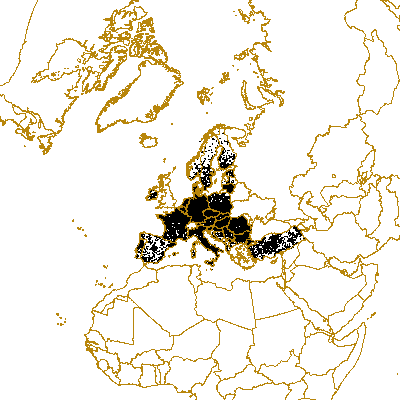urban
Type of resources
Available actions
Topics
INSPIRE themes
Keywords
Contact for the resource
Provided by
Years
Formats
Representation types
Update frequencies
status
Scale
Resolution
-

Changes between UMZs in 2000 and UMZs in 2006 using CLC version 13. Most changes are Positive changes, understood as areas of urban sprawl (i.e. new UMZ areas between 2000 and 2006), while negative changes describe the reduction of a certain UMZ between 2000 and 2006 (warning: some negative changes might be due to different interpretations between 2000-2006).
-

A UMZ is defined as a "set of urban areas laying less than 200 m apart". Urban areas have been selected from Corine Land Cover 1990, version 13, by means of a complex methodology explained below.
-

A UMZ is defined as a "set of urban areas laying less than 200 m apart". Urban areas have been selected from Corine Land Cover 2006, version 13, by means of a complex methodology explained below.
-

Changes between UMZs in 1990 and UMZs in 2000 using CLC version 13. Most changes are Positive changes, understood as areas of urban sprawl (i.e. new UMZ areas between 1990 and 2000), while negative changes describe the reduction of a certain UMZ between 1990 and 2000 (warning: some negative changes might be due to different interpretations between 1990-2000).
-

A UMZ is defined as a "set of urban areas laying less than 200 m apart". Urban areas have been selected from Corine Land Cover 2000, version 13, by means of a complex methodology explained below.
-

The Urban Atlas is providing pan-European comparable land use and land cover data for Large Urban Zones with more than 100.000 inhabitants as defined by the Urban Audit. Urban Atlas' mission is to provide high-resolution hotspot mapping of changes in urban spaces and indicators for users such as city governments, the European Environment Agency (EEA) and European Commission departments.
-

The Urban Atlas is providing pan-European comparable land use and land cover data for Large Urban Zones with more than 100.000 inhabitants as defined by the Urban Audit. Urban Atlas' mission is to provide high-resolution hotspot mapping of changes in urban spaces and indicators for users such as city governments, the European Environment Agency (EEA) and European Commission departments.
-

The Urban Atlas is providing pan-European comparable land use and land cover data for Large Urban Zones with more than 100.000 inhabitants as defined by the Urban Audit. Urban Atlas' mission is to provide high-resolution hotspot mapping of changes in urban spaces and indicators for users such as city governments, the European Environment Agency (EEA) and European Commission departments.
-

The Urban Atlas is providing pan-European comparable land use and land cover data for Large Urban Zones with more than 100.000 inhabitants as defined by the Urban Audit. Urban Atlas' mission is to provide high-resolution hotspot mapping of changes in urban spaces and indicators for users such as city governments, the European Environment Agency (EEA) and European Commission departments.
-

The Urban Atlas is providing pan-European comparable land use and land cover data for Large Urban Zones with more than 100.000 inhabitants as defined by the Urban Audit. Urban Atlas' mission is to provide high-resolution hotspot mapping of changes in urban spaces and indicators for users such as city governments, the European Environment Agency (EEA) and European Commission departments.
 RUC Geo-Data catalogue
RUC Geo-Data catalogue